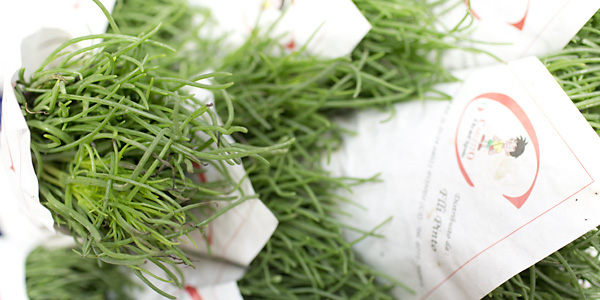Agretti (a.k.a. Monk’s Beard)
Agretti is also known as monk’s beard or barba di frate. It’s a little like samphire and has a lovely firm texture. The plant is native to Mediterranean seashores. In ancient times it would have been foraged and eaten as a useful green in the winter. Nowadays, agretti is either picked wild or cultivated, sometimes in large greenhouses. To prepare, hold a bunch of agretti in your hand and cut off the roots, then rinse.
Recipe Ideas:
Use raw in a similar fashion to chives.
Steam, saute or blanch then serve with a little olive oil and lemon juice, or butter and anchovies. A hit of orange or lemon zest will lift the dish. Roasted nuts will add extra crunch.
Mixed into pasta or stir through risottos (see julskitchen.com for a couple of recipes).
In this article in Red magasine, chef Florence Knight says: “'I’ve been using agretti, or monks beard, for years … It’s especially prized in Italy where it is traditionally paired with anchovies, bacon, chilli and olive oil. … The flavour is a little more grassy than spinach and it is much more succulent. I prefer it to have a slight crunch but you can cook it until it is soft and noodley. I like to serve it wilted with clams, cooked in chilli and lemon spooned over a creamy burrata or as a little side dish with melted anchovies, garlic and olive oil.'
In this article in the Guardian, chef-owner Andi Oliver describes a dish of sea bream with agretti: “I love greens and this is a cross between samphire, asparagus, dill fronds and Chinese broccoli – all my favourite things in the world. The bream was beautifully cooked with crisp skin and flaky flesh. Then they made a buttery sauce with mussels and cockles and ran the agretti through that. That piece of fish with that buttery sauce … I was transported.”

